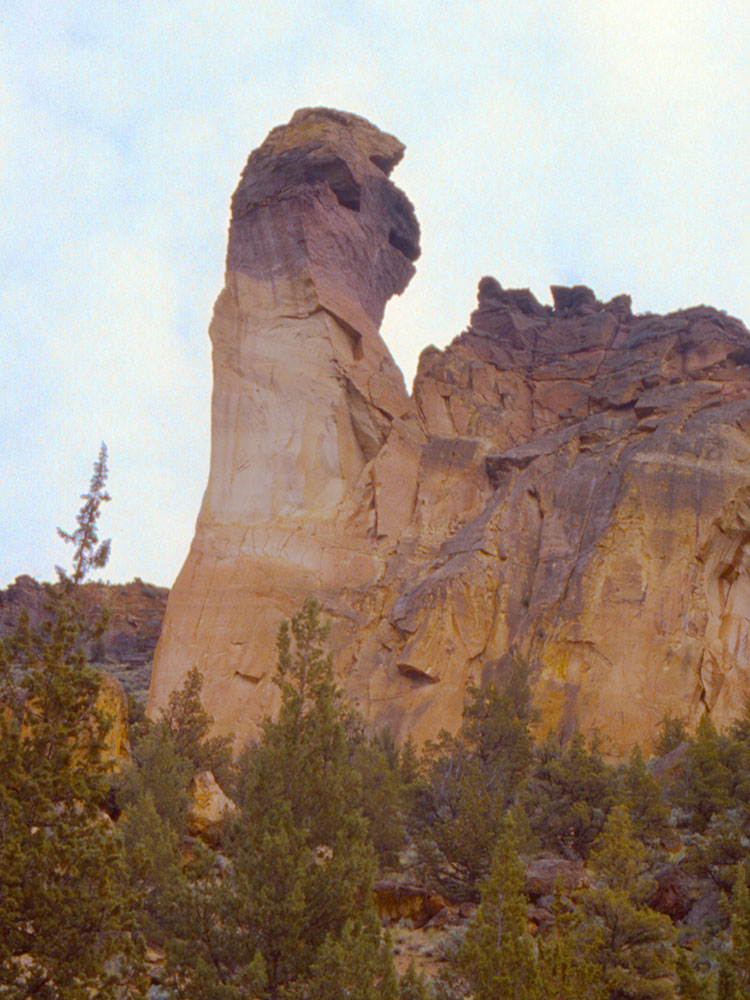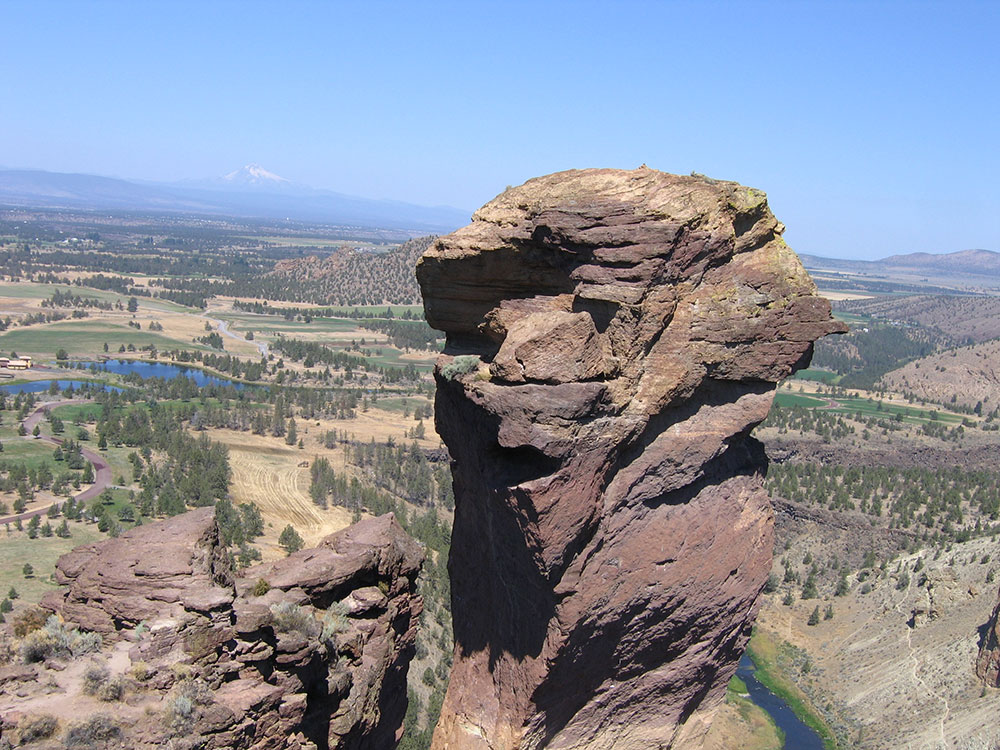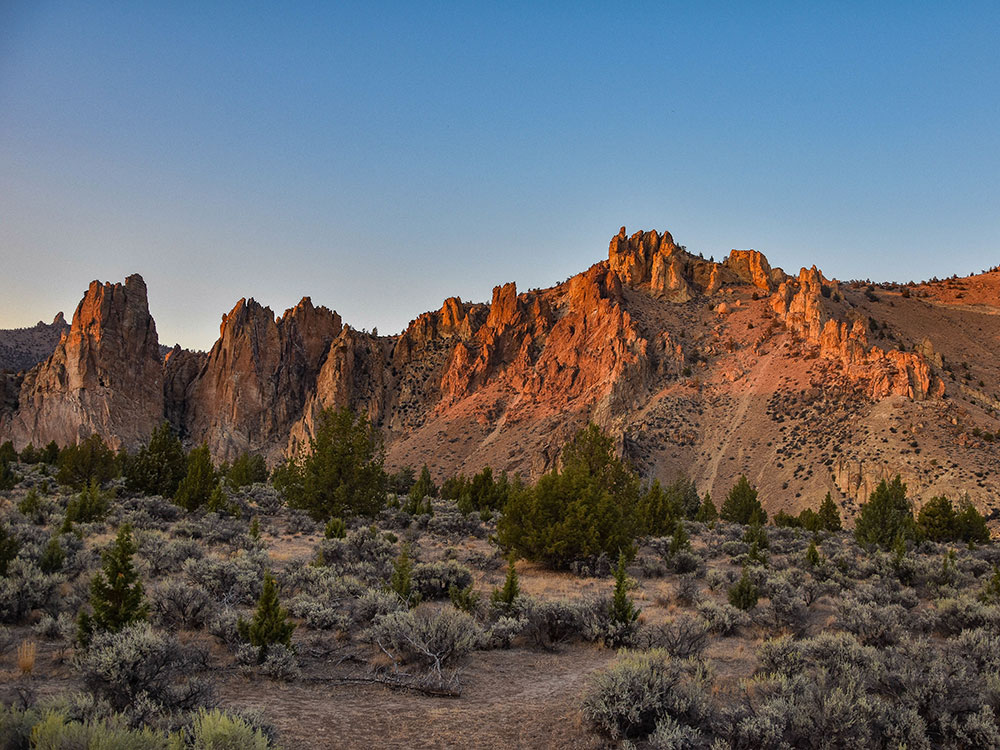State park located in central Oregon's High Desert is popular for sport climbing, traditional climbing, multi-pitch climbing, and bouldering
General Information
Smith Rock State Park is a state park located in central Oregon's High Desert near the communities of Redmond and Terrebonne. The day-use area of the park is open daily from dawn to dusk. The park also has a camping area as well that accommodates tent camping only. Its sheer cliffs of tuff and basalt are ideal for rock climbing of all difficulty levels. Smith Rock is generally considered the birthplace of modern American sport climbing, and is host to cutting-edge climbing routes. It is popular for sport climbing, traditional climbing, multi-pitch climbing, and bouldering.

The geology of Smith Rocks is volcanic. It is made up of layers of recent basalt flows overlaying older Clarno ash and tuff formations. Approximately 30 million years ago, a large caldera was formed (Crooked River caldera) when overlying rock collapsed into an underground lava chamber. This created a huge amount of rock and ash debris that filled the caldera. That material solidified into rock, becoming Smith Rock tuff. Rhyolite flows intruded along faults in the Smith Rock Tuff. A half million years ago, basalt lava flows from nearby volcanoes covered the older tuff.
More recently, the Crooked River cut its way through the layers of rock to create today's geographic features. Smith Rock itself is a 3,200-foot (980 m)-high ridge (above sea level) with a sheer cliff-face overlooking a bend in the Crooked River (elev. 2600 ft), making the cliffs about 600 feet high.
The State of Oregon obtained the park property between 1960 and 1975 from the City of Redmond and Harry and Diane Kem.

The park has many miles of developed trails for hiking. The trails have viewpoints along the routes that overlook the Crooked River and nearby rock formations. The two main trails are the Summit Trail and Misery Ridge. The park's trail network links to neighboring Forest Service and Bureau of Land Management trails on adjacent public lands.
The park contains the first U.S. climb rated 5.14 (8b+). The area is well known for its challenging climbing routes and attracts high level climbers. In 1983, Alan Watts began to use sport climbing ethics which pushed American climbing to new levels. Shortly after, between 1992 and 2009, about 500 new climbing routes were added. This brought climbers from all over the world as Smith Rock became the world capital for sport climbing. To this day, the park still attracts climbers from around the globe. The winter weather is typically cold (below freezing), but climbers still make the journey due to the reduced traffic on routes. Summer months regularly reach the 100s °F (40s °C). Some climbing routes are closed periodically for the protection of nesting birds of prey.
Smith Rock State Park has more than 1,800 rock climbing routes as of 2010. The park is broken up into walls and have names commonly used by the climbing community.
The park's day-use area has a visitor center, picnic facilities, and restrooms. The day-use area is open from dawn to dusk year-round. There is also a tent-only campground for overnight visitors. The campsites are located approximately 600 feet (180 m) from a parking area along the park's main access road. Restrooms, showers, and a cooking area are located near the parking area. Open fires are not permitted. Many of the state park campers will stay at Skull Hollow, a nearby BLM camp ground.
There is abundant wildlife in and around the park. Mule deer and many small mammals are common in the park. river otter and beaver are found along the park's Crooked River frontage. The Smith Rock area hosts many types of birds like the canyon wren and the white-throated swift, including birds of prey such as prairie falcons and golden eagles. Geese and ducks nest along the river in the spring time. There are rattlesnakes in some areas of the park.
Smith Rock State Park is home to some extreme running races. The races include distances ranging from 4 miles to 50 miles, all on the challenging and hilly terrain of Smith Rock.
This article uses material from the Wikipedia article "Smith Rock State Park", which is released under the Creative Commons Attribution-Share-Alike License 3.0

